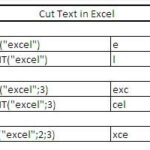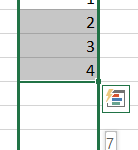Image to Excel: Convert Tables & Data From Pictures Instantly
Data comes in many formats. Sometimes it’s trapped in an image. A screenshot. A photo of a report. A scanned document. Manually typing this data into Excel wastes time and causes errors. Microsoft Excel now has a solution. You can convert image to Excel directly. No typing needed. This feature uses OCR technology to read and extract data automatically.
What Is Image to Excel?
Image to Excel is a built-in Excel feature. It converts pictures into editable spreadsheets. The feature uses Optical Character Recognition (OCR). This technology reads text in images. It then places the data into Excel cells.
Why use it? It’s fast. It’s accurate. It eliminates manual data entry.
What You Need
You need:
- A recent version of Microsoft Excel
- An image file (JPG, PNG, GIF, etc.)
- Or a screenshot on your clipboard
That’s all. The rest is automatic.
Method 1: Import From a File
Step 1: Open Your Image
First, have your image file ready. It could be a screenshot, photograph, or scanned document.
Step 2: Go to the Data Tab
Click the “Data” tab on the Excel ribbon.
Step 3: Find “From Picture”
In the “Get & Transform Data” group, click “From Picture”. A dropdown menu appears.
Step 4: Select “Picture From File”
Click “Picture From File…”. A file explorer opens.
Step 5: Choose Your Image
Navigate to your image. Select it. Click “Insert”.
Excel now analyzes the image. It reads the data inside. You’ll see a preview pane appear.
Method 2: Use a Screenshot
Step 1: Capture Your Image
Take a screenshot. On Windows, use the Snipping Tool or Print Screen key. On Mac, use Command + Shift + 4.
Step 2: Go to Data Tab
Click “Data” > “From Picture”.
Step 3: Select “Picture From Clipboard”
Choose this option. Excel reads your screenshot. The preview pane appears.
Review the Data
Excel shows the recognized data in a preview pane. Check it carefully. OCR is powerful but not perfect. Look for:
- Misread characters (0 vs O, 1 vs l)
- Incorrect numbers
- Formatting issues
Click on cells in the preview to edit them. Fix errors before importing.
Insert the Data
Once you’re satisfied:
1. Click the “Insert Data” button
2. Excel asks for confirmation
3. Click “Insert Data” again
4. The data appears in your spreadsheet
Final Adjustments
After import, review your data:
- Check column widths
- Verify data types (numbers vs text)
- Fix alignment if needed
- Adjust formatting
Your data is now ready for analysis, calculations, or further processing.
Tips for Best Results
- Use clear, high-quality images
- Ensure tables are well-defined
- Avoid skewed or rotated images
- Test with small tables first
- Keep OCR limitations in mind (handwriting may not work well)
Using image to Excel saves hours. It transforms static pictures into dynamic spreadsheet data. Try it today and simplify your data entry workflow.



